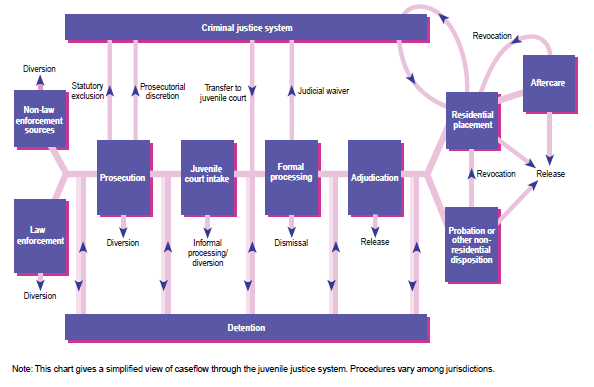David Carter and Kate McLean
The bulk of this chapter deals with official actions from the courts on individuals in the community, while they are under some court-imposed sanction; these individuals have been effectively “processed,” and sentenced by the criminal justice system, even if they are monitored in the community. However, there is also a large number of individuals that do not even make it that far in the criminal justice system, due to some form of diversion. Diversion is not the same as community corrections – but it is presented in this chapter, as an action that effectively keeps a person in the community.
Diversion is a process whereby an individual, at some stage, is diverted from continuing on in the formal justice process. Diversion can come as early as initial contact with a law enforcement officer, if they exercise their discretion to not arrest, and thus place the individual in the criminal justice system. At this point, diversion might take the form of a verbal warning, a warning ticket, or just a decision by the officer to not start a formal ticket or citation. Similarly, prosecutors may decide to not charge an individual, on the condition that they enter into some kind of rehabilitative programming. A judge may also make such a decision, in lieu of a judgment, or as a condition of a judgment. An example of this could be where a judge could sentence someone to a sanction. In lieu of that sanction, the judge offers a person the chance to complete a diversion program, effectively nullifying the judgment upon successful completion.
It is difficult to know the exact number of diversions that occur in the United States, across the variety of places where diversion can occur – not least because decisions to divert are marked by the absence of a record. However, it is estimated that millions of diversions happen each year, at every stage of criminal justice processing. The below chart is. representation of the juvenile justice system, which mirrors the adult criminal justice system, and is particularly “leaky” due to diversion. Points of possible diversion are thus explicitly labeled in the below image.


